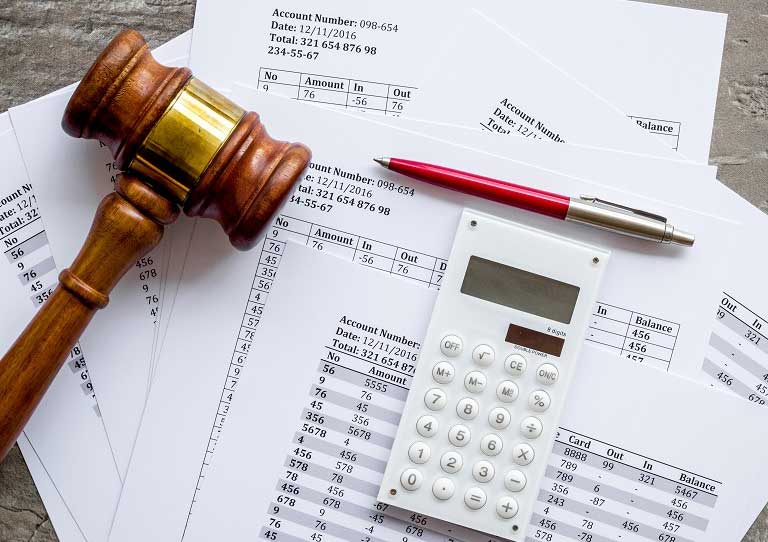Insolvency and Restructuring
Restructuring:
- Financial situation study
- Independent business plan review (IBR)
- Monitoring, cash flow forecasting and maximization. Advice on obtaining new financing: public financing and aid, working capital financing, bank financing, special situations funds, ABL funds
- Accompanying the client in the design of the restructuring plan
- Examination of debt refinancing plan: : analysis of the target debt, types of credits, extension of effects, new guarantees, etc.
- Operational restructuring: interim management (CRO), strategic repositioning, working capital optimization, cost restructuring plan
- Negotiations with financial institutions and suppliers
- Preparation of stand/still agreements
- Communication of the opening of negotiations with creditors (pre-bankruptcy application)
- Active participation in restructuring plan negotiations
- Possibility of being appointed as Restructuring Expert
- Judicial approval of the restructuring plan
Lawyers specialized in insolvency proceedings:
- Application for bankruptcy proceedings by the debtor or creditor
- Follow-up of the entire bankruptcy proceeding
- Defense of the rights of financial creditors, workers, or of any other nature
- Liability of administrators: qualification pieces
- Reinstatement actions
- Assignment or purchase of credits
- Purchase of a company's productive unit
- Bankruptcy administration
- Processing of bankruptcy without mass
- Second Chance: exoneration of unsatisfied liabilities
Steps of a restructuring plan
-
Communication of the beginning of negotiations ("preconcurso") to the Court (3 months from its effects to facilitate the negotiation of the plan)
- a. From probability of insolvency to actual insolvency (2 years)
- b. Possible extension for a further 3 months
- Appointment of restructuring expert:
- a. Necessary if extension of effects is foreseen
- b. Also if the judge considers it convenient to safeguard the creditors to whom the singular executions are suspended
- c. At the request of the debtor or 50% of the affected liabilities (exceptional, for 35%)
- Selection of potentially affected creditors (never maintenance, tort or labor claims - except for senior management - and very limited public credit)
- Communication to all potentially affected creditors (prior selection)
- Formation of classes (secured, public, financial creditors...) according to a common interest in accordance with objective criteria
- Negotiation between debtor and creditors on their content and scope
- Favorable vote by 2/3 of the liabilities of each class or ¾ if they are secured claims, whatever their content
- Request for homologation, necessary if:
- a. Dragging of creditors and/or partners or shareholders
- b. Protection against rescission actions
- c. Protection and preference of "fresh money" (interim financing and new financing)
- d. Termination of contracts in the interest of restructuring
- Eventual challenge (or prior opposition):
- a. Grounds listed, depending on whether dissenting class approving the plan, dissenting class that has rejected the plan, or partners/shareholders
- b. Judgment that rejects, not subject to appeal
- c. Judgment upholding the plan: effects limited to the appellant (non-affectation), with exceptions
- Compliance with the restructuring plan
Stages of insolvency proceedings
A. Common Phase
- The common phase begins with the declaration of the insolvency proceedings and it determines the debtor's assets through the inventory of assets and rights and the liabilities through the list of creditors in which the credits are quantified and qualified. Both the inventory and the list of creditors are prepared by the insolvency administration.
C. Liquidation Phase
- This phase is opened at any time at the request of the insolvent party and may also be requested by the insolvency administration in the event of cessation of the professional or business activity. It will also be opened if the proposed creditors' agreement is not presented or approved or, if after the agreement has been approved, it is not complied with. This phase is the other normal way of termination of the insolvency proceeding and consists of realizing the assets in order to pay the creditors with the proceeds.
B. Arrangement Phase
- In this phase, the creditors' agreement is processed, which requires both the acceptance of the creditors and judicial approval for its approval. The agreement is one of the common ways through which the insolvency proceeding can be overcome and its content usually consists, among other possibilities, of debt reductions and deferrals.
D. Qualification Section
- This is an eventual phase of the insolvency proceeding whose purpose is to verify whether in the generation or aggravation of the insolvency there has been fraud or gross negligence on the part of the debtor, in which case the insolvency proceeding will be classified as guilty and, if not, as fortuitous. The guilty classification has patrimonial consequences for the affected parties, as well as the disqualification to administer assets and to represent any person.
Restructuring
- In the context of a business crisis, there are mechanisms that can be used to try to reverse and overcome the situation without having to file for insolvency proceedings.
- Thus, restructuring plans with a wide range of contents can be executed, which may involve changes in assets, liabilities or shareholders' equity, including transfers of assets, production units or the entire operating company, as well as any necessary operational changes, or a combination of these elements. If certain requirements are met, it is possible to obtain judicial approval of the restructuring plans, which allows the effects of the plan to be extended to dissenting creditors and even, on certain occasions, to the partners and to protect against its termination in a possible insolvency proceeding.
- In certain occasions and at the time of facing negotiations with creditors, it is convenient that the debtor in a situation of business crisis communicates to the court the opening of such negotiations since such communication has important effects, For a period of three months (with a possible extension for the same period), executions cannot be initiated requesting the seizure of assets or rights necessary for the business or professional activity (or of other assets and rights when necessary to ensure the successful outcome of the negotiations), executions already initiated are suspended, or a creditor's request for insolvency proceedings is not admitted for processing.
Prepack
- This is a mechanism for the sale of companies in crisis, which is often the best way out of this situation, since it allows the continuity of the business activity and the maintenance of jobs. It consists of the sale of the productive unit of the company at the initial moment of the insolvency proceeding, thus avoiding the deterioration of value that all insolvency proceedings entail.
- The recently approved bankruptcy reform has given legal status to this figure, providing legal certainty to the performance of this type of operations that allow the preservation of the business fabric as well as safeguarding employment.

Contact with specialized bankruptcy lawyers
Having a lawyer specialized in bankruptcy law can help you avoid extreme situations of bankruptcy and insolvency. Insolvency law is a complex legal field and not having qualified counsel can have disastrous consequences for companies and individuals. Do not hesitate to rely on an expert firm in Bankruptcy Law and Restructuring. We can help you.
March 2022 - Recognition of the Credits Arising from an ICO-COVID Guarantee in the Event of Bankruptcy of the Debtor



Si buscas prácticas o empleo en esta área de práctica, envía tu CV desde nuestro portal Únete a nosotros




































